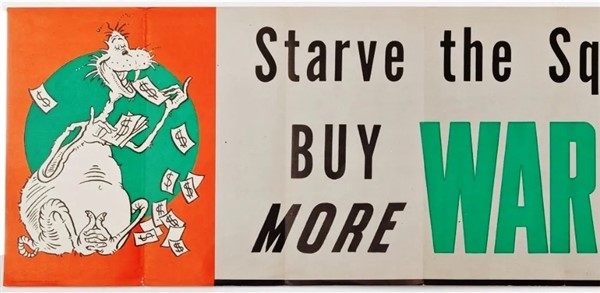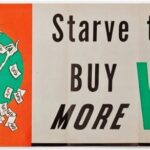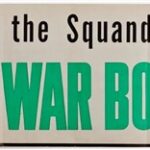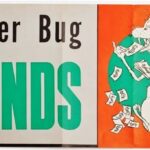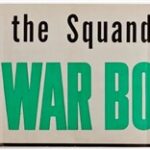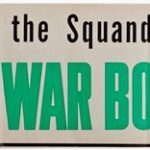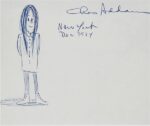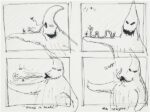DR. SEUSS, (AMERICAN 1904-1991)
Rare American WWII poster, ‘Starve the Squander Bug – Buy More War Bonds’. Illustration by Theodore Seuss Geisel (1904-1991) aka Dr. Seuss. Circa 1945. 11 x 46.5 inches. Mailing folds..
This is a rare vintage piece from World War II, artistically created by Dr. Seuss for the War Bond effort. The item remains in fresh, supple condition and would be superb framed.
War bonds are debt securities issued by a government to finance military operations and other expenditure in times of war. They are also a means to control inflation by removing money from circulation from a stimulated wartime economy. The last time the United States issued war bonds was during World War II, when full employment collided with rationing, and war bonds were seen as a way to remove money from circulation as well as reduce inflation. Issued by the U.S. Government, they were first called Defense Bonds. The name was changed to War Bonds after the Japanese attack on Pearl Harbor, December 7, 1941.
Despite the war’s hardships, 134 million Americans were asked to purchase war bonds to help fund the war. The war bonds actually were a loan to the government to help finance the war effort. The War Finance Committee was in charge of supervising the sale of all bonds, and the War Advertising Council promoted voluntary compliance with bond buying. The work of those two organizations produced the greatest volume of advertising in U.S. history. In the name of defense of American liberty and democracy, and as safe havens for investment, the public was continually urged to buy bonds. An emotional appeal went out to citizens by means of advertising. Even though the bonds offered a rate of return below the market value, it represented a moral and financial stake in the war effort. The advertisements started with radio and newspapers, then later added magazines to reach the masses. The bond campaign was unique in that both the government, as well as private companies, created the advertisements. Those who contributed advertising space felt they were doing even more for the war effort; then there were organizations that made up their own war bond advertisements to reflect their patriotism. The government recruited New York’s best advertising agencies, famous entertainers, and even used familiar comic strip characters to further their appeal to America (YES EVEN DR. SEUSS!!)


